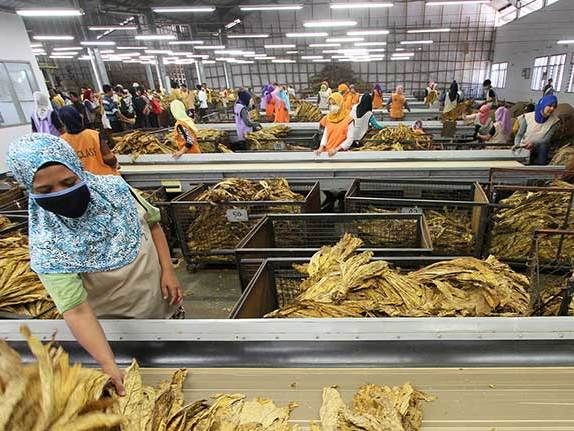Loading...
Fewer women than men will regain employment during the COVID-19 recovery
A new policy brief shows that the disproportionate job and income losses suffered by women during the pandemic will persist in the near future
11-Aug-2021
- Switzerland
Advertisement
The inequalities between women and men in the world of work that have been exacerbated during the COVID-19 pandemic will persist in the near future, according to the International Labour Organization (ILO).
A new policy brief finds there will be 13 million fewer women in employment in 2021 compared to 2019, while men’s employment will have recovered to 2019 levels. Even though the projected jobs growth in 2021 for women exceeds that of men, it will, nonetheless, be insufficient to bring women back to pre-pandemic employment levels.
Only 43.2 per cent of the world’s working-age women will be employed in 2021, compared to 68.6 per cent of working-age men.
The ILO brief, Building Forward Fairer: Women’s rights to work and at work at the core of the COVID-19 recovery , shows that women have suffered disproportionate job and income losses because of their over-representation in the hardest-hit sectors, such as accommodation and food services, and the manufacturing sector.
Globally, between 2019 and 2020, women’s employment declined by 4.2 per cent, representing a drop of 54 million jobs, while men’s employment declined by 3 per cent, or 60 million jobs.
Not all regions have been affected in the same way. The Americas experienced the greatest reduction in women’s employment as a result of the pandemic (a reduction of 9.4 per cent). The second highest drop in the number of employed women was observed in the Arab States where, between 2019 and 2020, women’s employment declined by 4.1 per cent and men’s by 1.8 per cent.
In Asia and the Pacific the pandemic led women’s employment to decrease by 3.8 per cent, compared to a decline of 2.9 per cent for men. In Europe and Central Asia, women’s employment was curtailed considerably more than men’s, leading to a 2.5 per cent and a 1.9 per cent decrease, respectively.
In Africa, men’s employment experienced the smallest decline across all geographic regions, with just a 0.1 per cent drop between 2019 and 2020, while women’s employment decreased by 1.9 per cent.
During the pandemic, women faired considerably better in countries that took measures to prevent them from losing their jobs and allowed them to re-enter employment as early as possible.
In Chile and Colombia, for example, wage subsidies were applied to new hires, with higher subsidy rates for women. Colombia and Senegal were among those who created or strengthened support for women entrepreneurs. In other cases, such as Mexico or Kenya, quotas were established to guarantee that women benefited from public employment programmes.
The brief emphasizes that “building forward fairer” means placing gender equality at the core of the recovery effort and putting in place gender-responsive strategies. These include:
A new policy brief finds there will be 13 million fewer women in employment in 2021 compared to 2019, while men’s employment will have recovered to 2019 levels. Even though the projected jobs growth in 2021 for women exceeds that of men, it will, nonetheless, be insufficient to bring women back to pre-pandemic employment levels.
Only 43.2 per cent of the world’s working-age women will be employed in 2021, compared to 68.6 per cent of working-age men.
The ILO brief, Building Forward Fairer: Women’s rights to work and at work at the core of the COVID-19 recovery , shows that women have suffered disproportionate job and income losses because of their over-representation in the hardest-hit sectors, such as accommodation and food services, and the manufacturing sector.
Globally, between 2019 and 2020, women’s employment declined by 4.2 per cent, representing a drop of 54 million jobs, while men’s employment declined by 3 per cent, or 60 million jobs.
Not all regions have been affected in the same way. The Americas experienced the greatest reduction in women’s employment as a result of the pandemic (a reduction of 9.4 per cent). The second highest drop in the number of employed women was observed in the Arab States where, between 2019 and 2020, women’s employment declined by 4.1 per cent and men’s by 1.8 per cent.
In Asia and the Pacific the pandemic led women’s employment to decrease by 3.8 per cent, compared to a decline of 2.9 per cent for men. In Europe and Central Asia, women’s employment was curtailed considerably more than men’s, leading to a 2.5 per cent and a 1.9 per cent decrease, respectively.
In Africa, men’s employment experienced the smallest decline across all geographic regions, with just a 0.1 per cent drop between 2019 and 2020, while women’s employment decreased by 1.9 per cent.
During the pandemic, women faired considerably better in countries that took measures to prevent them from losing their jobs and allowed them to re-enter employment as early as possible.
In Chile and Colombia, for example, wage subsidies were applied to new hires, with higher subsidy rates for women. Colombia and Senegal were among those who created or strengthened support for women entrepreneurs. In other cases, such as Mexico or Kenya, quotas were established to guarantee that women benefited from public employment programmes.
The brief emphasizes that “building forward fairer” means placing gender equality at the core of the recovery effort and putting in place gender-responsive strategies. These include:
- Investing in the care economy because the health, social work and education sectors are important generators of jobs, especially for women, and because care leave policies and flexible working arrangements can encourage a more even division of work at home between women and men.
- Working towards universal access to comprehensive, adequate and sustainable social protection for all to reduce the current gender gap in social protection coverage.
- Promoting equal pay for work of equal value.
- Eliminating violence and harassment in the world of work. Domestic violence and work-related gender-based violence and harassment worsened during the pandemic, further undermining women’s ability to engage in paid employment.
- Promoting women’s participation in decision-making bodies, social dialogue and social partner institutions.

A. Gromico / ILO























































